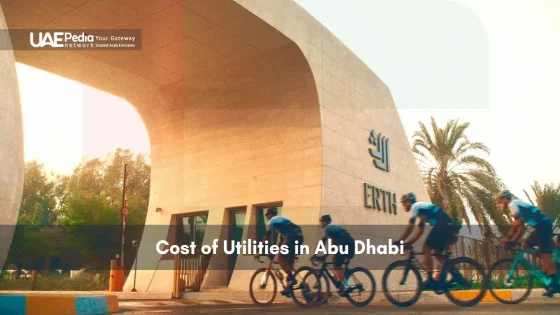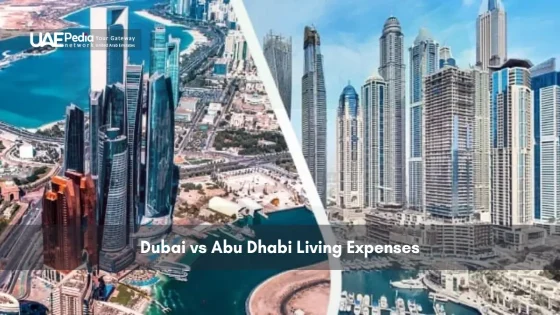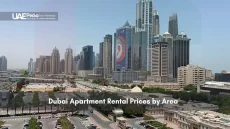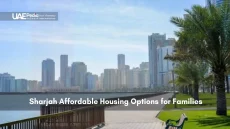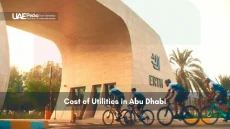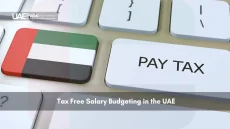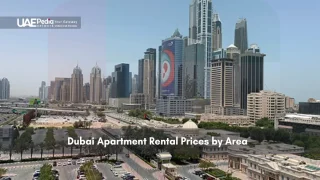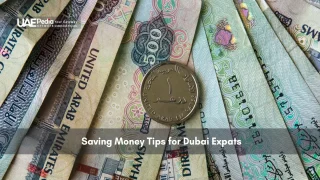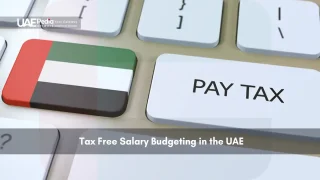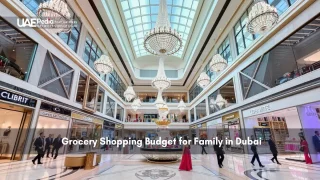Did you know a simple shawarma meal in Deira costs exactly 40 AED – but your total lifestyle budget here might surprise you? Dubai dazzles with golden opportunities, yet smart financial planning separates thriving residents from those counting dirhams.
This guide cracks open the real numbers behind living independently in the UAE’s hub. We’ve mapped everything from sizzling street food prices to AC bills that’ll make your eyebrows rise faster than Burj Khalifa. You’ll get fresh 2024 data – including utility averages (hello, 796.85 AED baseline) and transport tricks – served with majlis-style hospitality.
Whether you’re eyeing Marina high-rises or craving Karama’s hidden gems, we break down costs without the corporate jargon. Our team tested supermarket aisles, rode the Metro at rush hour, and even negotiated with landlords so you don’t have to.
- Exact AED figures for meals, groceries, and essential services
- Neighborhood-specific budget strategies beyond tourist zones
- Pro tips to balance luxury experiences with practical spending
Introduction to Living in Dubai as a Single Person
Think Dubai’s just golden skyscrapers and endless brunches? Think again—your morning karak chai ritual could cost less than that latte back home. This city thrives on contrasts: Michelin-starred dinners share sidewalks with 15-AED shawarma carts, while beachfront studios sit a Metro ride away from desert-edge bargains.
Overview of Dubai’s Cost of Living
Dubai often gets labeled as a luxury playground, but savvy residents know its secret—flexibility. Yes, designer malls glitter like mirages, but local markets and budget-friendly districts keep daily living grounded. Compared to New York or London, the city’s 31% cheaper for groceries and 48% less for public transport, according to 2024 benchmarks.
Neighborhoods dictate budgets harder than summer temperatures. A studio in Dubai Marina might triple Al Quoz’s rent, while Deira’s spice-scented lanes offer meals at half Palm Jumeirah prices. Your dirham stretches or shrinks based on one question: glitz or grit?
Key Factors Influencing Expense Levels
Four pillars shape your cost blueprint here. Housing chews 30-50% of budgets—we’ll explore rent vs. buy strategies later. Transportation splits sharply: a monthly Metro pass (350 AED) versus SUV ownership (2,500+ AED).
Utilities add another layer. Desert AC needs spike summer bills, while fiber-optic internet rivals global rates. Lastly, lifestyle choices—Friday brunches, desert safaris, gym memberships—swing totals faster than a falcon diving for prey.
Ready to dissect each category? We’ve mapped every dirham-detail, from bargaining at Fish Roundabouts to decoding DEWA bills. Your Emirates adventure starts with clear numbers—no surprises, just smart planning.
Understanding average monthly expenses dubai single person
Your dirham’s journey from wallet to essentials reveals Dubai’s true character. Let’s map where funds flow fastest—and where smart choices create breathing room.
Fixed vs Flexible: Where Money Goes
Housing anchors your budget like desert sun anchors summer heat. City center studios near Business Bay start at 5,500 AED, while Al Qusais offers similar spaces for 3,200 AED. Location isn’t just about views—it’s about trade-offs between convenience and cash.
| Area | Studio (AED) | 1-Bed (AED) |
|---|---|---|
| Downtown | 6,800 | 9,500 |
| Deira | 4,200 | 6,100 |
| Jumeirah Village | 3,900 | 5,400 |
Utilities whisper “winter relief” until summer AC wars begin. Expect 650-900 AED monthly for cooled air, hydration, and Netflix nights. Pro tip: DEWA’s 700 AED baseline jumps 40% June-September.
Groceries swing wildly based on your hummus loyalty. Local markets like Union Coop cut bills to 450 AED monthly, while imported cheeses at Spinneys might double that. Metro cards (230 AED) or fuel pumps (1,100 AED)? Your transport choice reshapes budgets faster than a sandstorm.
These pillars—shelter, lights, nourishment, movement—form 75% of solo living costs. Master them, and brunches at Burj Al Arab become achievable treats rather than financial mirages.
Housing and Rent Considerations in Dubai
Your Dubai address isn’t just a pin on Google Maps—it’s the cornerstone of your Emirates adventure. Let’s navigate the desert of dirham dilemmas, where location determines whether you’re sipping coffee with skyline views or mastering the art of Metro transfers.
City Lights or Suburban Nights?
Downtown’s glitter comes at a price. A sleek 1-bedroom near Burj Khalifa averages 8,715 AED monthly—enough to make even luxury lovers blink. Compare that to Jumeirah Village Circle’s 4,900 AED for similar space, plus community pools. Here’s the trade-off:
- City Centre Perks: Walkable offices, 24/7 delivery, instant social life
- Suburban Savings: Larger units, parking included, quieter streets
Transportation costs shift the math. Downtown dwellers might skip car payments, while Al Barsha residents budget 350 AED monthly for fuel. Pro tip: Areas near Metro stations blend affordability with connectivity.
Rent or Roots?
Buying tempts with long-term gains—if your salary supports it. A 1,000 sq ft apartment in Business Bay costs 2.4 million AED (2,400 AED/sq ft), while Dubai South offers 1,200 AED/sq ft. Crunch the numbers:
| Option | Monthly Cost | Commitment |
|---|---|---|
| Rent (Downtown) | 8,715 AED | 1-2 years |
| Buy (Dubai South) | 6,200 AED* | 25-year mortgage |
*Based on 20% down payment, 4.5% interest
Salaries determine feasibility. Earning 25,000 AED monthly? Rentals fit comfortably. At 15,000 AED, suburban leases leave room for life’s adventures—dune bashing, brunches, or saving for future goals.
Utilities, Groceries, and Transportation Costs in Dubai
Between AC bills and grocery runs, your dirhams disappear faster than sunset over the desert. Let’s peel back receipts to reveal where funds flow—and how to reroute them.
Utilities Breakdown: Electricity, Water, and Internet
Summer turns every apartment into a power-hungry igloo. A typical per month DEWA bill breaks down like this:
| Service | Cost (AED) |
|---|---|
| Electricity | 450 |
| Water | 120 |
| Internet | 200 |
| Waste | 26.85 |
“My June bill hits 1,100 AED—like paying for a weekend staycation just to breathe cold air!”
Affordable Grocery Shopping and Food Markets
Spice-scented bargains await beyond glossy supermarket aisles. Compare these staples:
| Item | Local Market (AED) | Imported Store (AED) |
|---|---|---|
| Milk (1L) | 12 | 18 |
| Bread | 5 | 8 |
| Water (6-pack) | 12 | 30 |
Pro tip: Hit Al Barsha’s Lulu Hypermarket Wednesdays for 20% off produce.
Public Transport vs. Car Ownership
The Metro’s silver carriages offer budget-friendly breezes through the city. Monthly passes cost 350 AED—versus 1,100 AED per month for fuel, insurance, and parking. One resident’s hack?
- Nol Card for work commutes (230 AED)
- Careem rides for weekends (300 AED)
- Total: 530 AED vs. 1,500+ AED for car owners
Your choice: pay for AC seats on the Metro or AC repairs in August traffic.
Budgeting Tips for a Comfortable Lifestyle
Think your paycheck evaporates faster than morning fog over Jumeirah Beach? Let’s turn desert sand into savings with strategies that keep your dirhams working smarter. With an average take-home pay of 14,439.55 AED, smart allocation separates survival from sunset yacht trips.
Practical Budgeting Strategies
Start by slicing expenses into fixed and flexible categories. Apps like YNAB or Excel track every 5-AED karak chai purchase. One resident’s trick: “I divide my salary into digital envelopes—55% essentials, 30% fun, 15% savings. It’s like having a financial GPS!”
| Expense Category | Ideal % | Real-World Example |
|---|---|---|
| Housing | 35% | 5,053 AED |
| Utilities | 8% | 1,155 AED |
| Savings | 15% | 2,166 AED |
Negotiation is your secret weapon. Haggle for better internet packages, ask landlords for rent-free months, and use grocery loyalty cards. Pro tip: Compare yearly totals—Dubai’s 18,000 AED average leisure spending rivals Parisian holiday budgets.
“I saved 600 AED/year by switching DEWA payments to credit card points—now I get free hotel stays!”
Never skip health coverage—it’s legally required and prevents 20,000+ AED hospital surprises. Pair this with automated savings transfers (even 500 AED/month grows to 30,000 AED in five years). Global price comparisons help too: Dubai ranks 28% cheaper than NYC for dining but 15% pricier than Bangkok for fitness clubs.
Assessing Lifestyle and Leisure Expenditures
Ever wonder why some residents ride camels at sunset while others sip champagne in skyscraper lounges? Your leisure choices here shape both memories and bank balances—let’s decode the math behind the magic.
Dining, Entertainment, and Fitness Costs
Dubai’s social scene spans from food truck feasts to Michelin-starred marvels. A casual dinner at Jumeirah’s Salt Bae-approved burger joint runs 120 AED, while Deira’s hidden gem cafés serve shawarma platters for 25 AED. Compare these options:
| Activity | Budget | Premium |
|---|---|---|
| Gym Membership | 150 AED (community centers) | 650 AED (luxury clubs) |
| Cinema Ticket | 35 AED (weekday matinee) | 150 AED (VIP recliners) |
| Brunch | 90 AED (local buffet) | 550 AED (beachfront spread) |
Fitness enthusiasts juggle costs: yoga studios charge 80 AED per class, but public parks offer free sunrise sessions. One resident’s hack? “I mix FitPass trial deals (99 AED/month) with beach volleyball—stays fresh and affordable.”
How to Balance Leisure and Necessities
Smart planners allocate 15-20% of their income to fun—without touching housing or health funds. Try the 1:3 ratio: for every dirham spent on luxuries, save three for essentials. Apps like Zbooni track real-time spending across categories.
- Priority stack: DEWA bills > gym membership > weekend adventures
- Swap expensive hobbies: Desert picnics instead of rooftop cocktails
- Leverage loyalty programs: Entertainer app cuts dining costs by 50%
“I treat leisure like a utility bill—budgeted monthly, never skipped. 300 AED for movies and karak chai runs keeps me sane!”
Remember, education on local deals pays dividends. Follow Instagram pages like @DubaiCheapEats for flash sales. Your golden rule? Every dirham spent on brunch could fund a future dhow cruise—choose experiences that spark joy, not just Instagram likes.
In-Depth Statistical Breakdown of Expenses
Ever wondered how a week’s groceries compare to a single night out in Dubai’s hotspots? Let’s slice through the numbers—your morning latte habits might reveal more than you think.
Insights from Restaurant and Market Price Data
Food costs swing like desert temperatures between neighborhoods. A gallon of milk costs 27.03 AED at Deira markets but jumps to 38 AED in Marina gourmet stores. Check these eye-opening comparisons:
| Item | Local Market (AED) | Tourist Area (AED) |
|---|---|---|
| Chicken Meal | 22 | 65 |
| Bread Loaf | 4.50 | 9 |
| 1L Water | 1.50 | 5 |
Street food fans rejoice—Karama’s 15-AED shawarma beats Downtown bistros charging 120 AED for similar wraps. Pro tip: Water costs 300% more in malls than supermarkets—pack your bottle!
Review of Utility and Transportation Rates
Your 915 sq ft apartment tells its own story through bills. Summer turns electricity into a budget vampire:
| Utility | Winter (AED) | Summer (AED) |
|---|---|---|
| Electricity | 320 | 610 |
| Water | 85 | 140 |
| AC Maintenance | 90 | 200 |
“Tracking my DEWA app showed I wasted 1,200 AED yearly on standby devices—now I unplug like a ninja!”
Transport choices reshape budgets. A monthly Metro pass (350 AED) costs less than three days of car fuel. Yet ride-hail fans spend 1,800 AED monthly—equivalent to 5,000 km of driving. Compare these cost trends before deciding wheels vs. Nol cards.
Comparative Cost Analysis: Dubai and Other Global Cities
Ever compared a Dubai metro ticket to London’s Tube fare while sipping New York-priced coffee? Global cities share glittering skylines—but their price tags tell wildly different stories. Let’s decode how the united arab emirates hub stacks up against urban giants.
Skyline Showdown: Rent and Daily Essentials
City centre studios reveal stark contrasts. Dubai’s prime areas charge 35% less than Manhattan but 18% more than Singapore’s business districts. Check these 2024 snapshots:
| Expense | Dubai (AED) | New York (AED)* | London (AED)* |
|---|---|---|---|
| 1-Bed Rent | 9,500 | 16,800 | 13,200 |
| Monthly Transit | 350 | 1,100 | 890 |
| Dinner for Two | 300 | 550 | 480 |
*Converted from USD/GBP at 3.67 AED/$1 and 4.65 AED/£1
Groceries add another twist. Milk costs 12 AED here versus 18 AED in Paris. But imported cheeses? They’re 22% pricier than in London markets.
Dirhams vs Dollars: The Currency Effect
The AED’s dollar peg creates unique math. When the GBP weakens, Dubai suddenly feels costlier for British expats. Consider:
- A 15,000 AED salary equals $4,086 USD but £3,226 GBP
- Eurozone residents save 8% on rents compared to 2022 rates
- School fees at private schools run 40% lower than NYC equivalents
“My London-born budget planner gasped when I showed her our DEWA bills—half what she pays for utilities back home!”
Smart savers monitor exchange rates like stock prices. Pro tip: Use multi-currency accounts to lock in favorable rates for big purchases. Whether you’re renting near the city centre or hunting for international schools, understanding this range of factors turns global comparisons into power moves.
Wrapping Up Your Expense Journey in Dubai
Ready to trade spreadsheet stress for sunset selfies in the Emirates? We’ve charted every dirham detail—from hidden grocery hacks to health insurance must-knows—so you can live Dubai like a pro, not a tourist.
Your blueprint boils down to smart choices. Opt for suburban studios over downtown dazzle, track spending with apps, and negotiate bills like a souk veteran. Remember: cooling a 915 sq ft apartment costs 40% more in summer, and ride-hailing drains wallets faster than desert heat.
Three power moves cement success:
- Living expenses mastery: Balance local markets with occasional luxuries
- Mandatory health insurance coverage (no exceptions!)
- Transport hybrid strategies: Metro commutes + weekend ride-shares
Compared to New York, you’ll save 35% on transit but invest more in AC battles. Tools like budget trackers and loyalty programs turn survival math into thriving art.
Revisit our neighborhood cost breakdowns when apartment hunting. Bookmark the utility rate charts before summer hits. With this guide, you’re not just crunching numbers—you’re crafting a life where desert dunes and designer malls coexist peacefully.
Hungry for more? Explore our deep dives into Arab Emirates culture, hidden gems, and financial frameworks. Your adventure’s just beginning—now go live Dubai with confidence, calculators optional.
Rent typically eats the largest chunk—around 30-40% of monthly budgets. Studio apartments in trendy areas like Dubai Marina start at AED 4,500, while Jumeirah Village Circle offers better value near metro lines. Always factor in DEWA (utilities) deposits too!
Absolutely! The metro links major districts like Downtown and Business Bay, with monthly passes under AED 350. Ride-hailing apps like Careem fill gaps, but consider occasional taxi costs for late nights or beach trips. Many expats bike or walk in pedestrian-friendly zones like City Walk.
Singles spend AED 800–1,200 monthly. Hit Lulu Hypermarket for bulk staples, and check out Ripe Market for organic finds. Alcohol adds up quickly—prices at Spinneys are 30% higher than duty-free. Pro tip: Talabat’s grocery delivery often has same-day deals!
A> Basic insurance starts at AED 500/month, but check your employer’s plan. Clinics like Mediclinic charge AED 300–500 per visit. Dental cleanings average AED 400. Always carry your EHIC (Emirates Health Insurance Card)—hospitals like Aster require it upfront.
Aim for AED 12,000+ monthly to enjoy brunches, gym memberships (AED 300–600), and desert safaris. Entry-level roles in tech or hospitality might offer AED 8,000–10,000—manageable if you share housing or limit dining out. Remember, no income tax helps stretch that dirham!
A> Rent’s 20% cheaper than Manhattan but pricier than Berlin. A latte here costs AED 22 (vs. in NYC), while Uber rides are 15% less. Big savings? No VAT on school fees or public transport. Use Numbeo’s cost comparator for real-time updates against your home currency.

